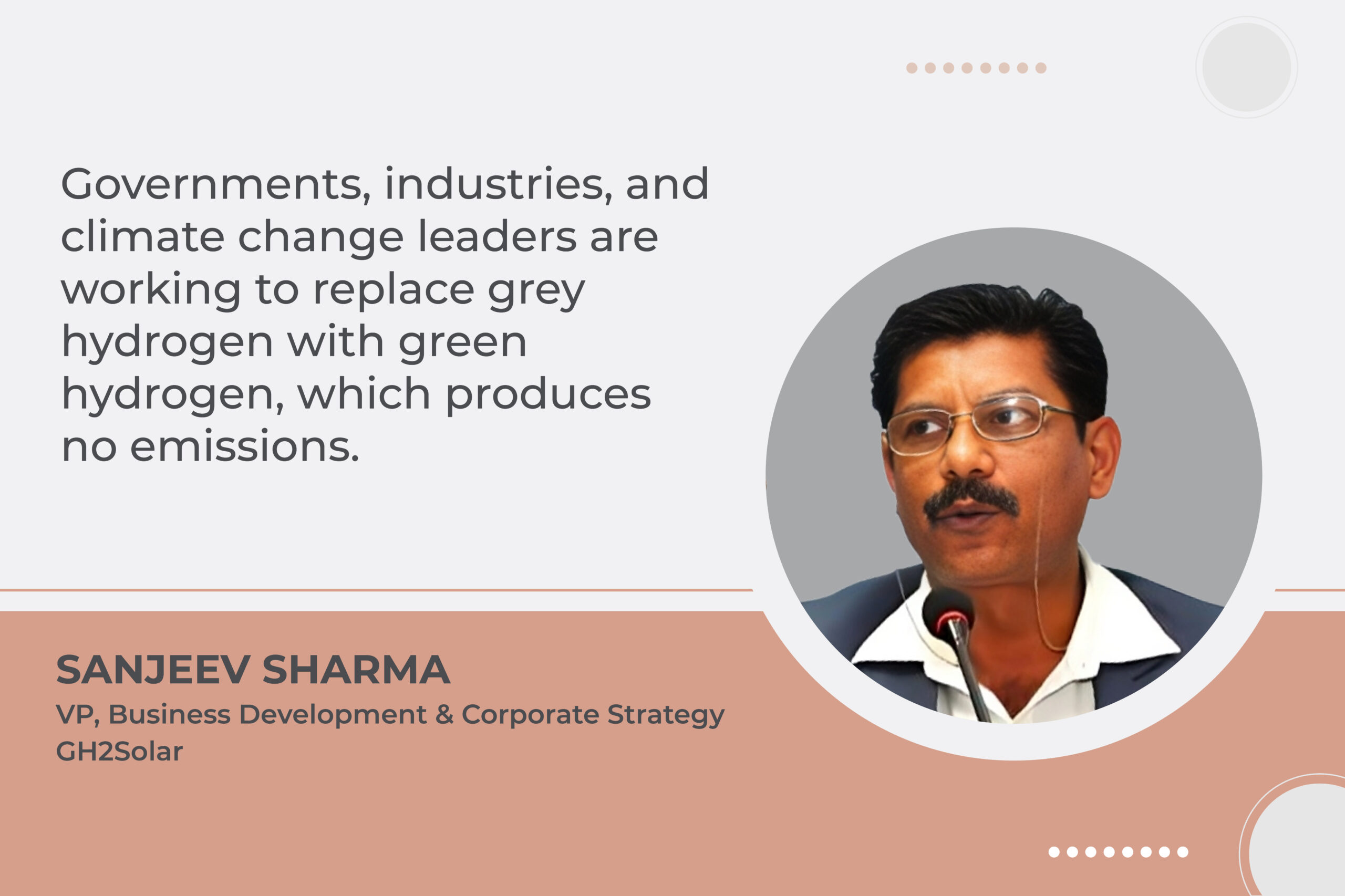AI catalysing efficiency and cost reduction in the green hydrogen economy
By Staff Report September 24, 2025 7:25 pm IST
By Staff Report September 24, 2025 7:25 pm IST

Governments, industries, and climate change leaders are working to replace grey hydrogen with green hydrogen, which produces no emissions.
Hydrogen is widely used in various applications worldwide, as it is not the electricity but a fuel that consumes electricity and is produced as such. This hydrogen can be converted into green ammonia, green methanol, and synthetic fuels and used directly as a fuel for green steel production. India’s 30 to 35 percent of emissions come from chemicals, refineries, steel, fertilisers, and glass. In 5 to 10 years, we can replace fossil fuels with hydrogen. The country has a target of 5 million metric tons of green hydrogen production under the National Green Hydrogen Mission (NGHM), making it the second-largest global initiative.
Types of hydrogen
Historically, grey hydrogen was the most widely used, accounting for 98 to 99 percent of the hydrogen used in the industry. And why is it grey? While producing it, it generates a significant amount of carbon emissions. That’s why it’s called grey hydrogen. Currently, the entire industry and global community are focused on reducing emissions and carbon output; however, grey hydrogen is widely used. Gradually, governments, industries, and climate change leaders are working to replace grey hydrogen with green hydrogen, which produces no emissions.
Green hydrogen is nearly carbon-free, but a small amount of residual carbon is associated with it because when we produce green hydrogen using a pump, motor, and compressor, these pieces of equipment, in the process of their manufacture, produce some carbon emissions. We can consider it to be 99.99 percent green, not 100 percent.
Blue hydrogen is produced in a carbon capture process. When grey hydrogen is produced, the clean hydrogen is removed from the process, and the carbon emitted during the process is captured, thereby transforming it into blue carbon. The remaining turquoise, pink, purple, and yellow hydrogen are small in nature and not relevant.
Electrolyser requirement
We have a significant water requirement because the green hydrogen production process involves feeding high-quality water into an electrolyser. The purpose of the electrolyser is to break H₂O into two atoms of hydrogen and oxygen. Electrolysers separate hydrogen and oxygen. We collect hydrogen and oxygen from the electrolyser, which are used in the industry and process. Pure oxygen is a commodity, or the hydrogen produced by the electrolyser is used in the industry.
AI’s role in the hydrogen economyAI is optimising electrolysers from production to distribution and end-use cases. These tools enhance their performance in various temperature, pressure, and voltage scenarios. Electrolysers account for nearly 60 percent of the total operational cost. For example, if 100 rupees are spent to produce one kilogram of hydrogen, the electricity cost would be almost 60 rupees. Therefore, optimising electrolyser performance is crucial as it reduces the operational cost of hydrogen production.
AI tools are used in load dynamic management because RE is not a stable power source; it will have fluctuations. The predictive tools help us to understand the behaviour of the electrolyser. Digital twins of electrolysers, equipped with various sensors, replicate the performance of electrolysers on a screen for performance management. This allows for continuous adjustment of system values to optimise efficiency.
AI plays a crucial role in plant design, manufacturing, and operations, making the hydrogen economy viable and cost-efficient for all. By reducing capital and operational costs, AI can make the hydrogen economy more viable and cost-effective for all.
Thumb rule and LCOH formula
As a thumb rule, one kilogram of hydrogen needs nine kilograms/ litres of water. The levelised cost of hydrogen (LCOH) is a formula used to calculate the annual cost of producing hydrogen, regardless of the off-season. For instance, if a hydrogen plant is operating for 25 years, the LCOH would be calculated at a specific rate, based on the cost of producing the hydrogen.
Producing high green hydrogen means replacing carbon dioxide (CO₂). A hydrogen car or hydrogen park uses 1 kg of hydrogen per day. This is equivalent to a diesel truck using 1 kg of hydrogen, saving nearly 8.8 kg of CO₂ daily. These are the formulas for hydrogen-based calculations.
We use cookies to personalize your experience. By continuing to visit this website you agree to our Terms & Conditions, Privacy Policy and Cookie Policy.